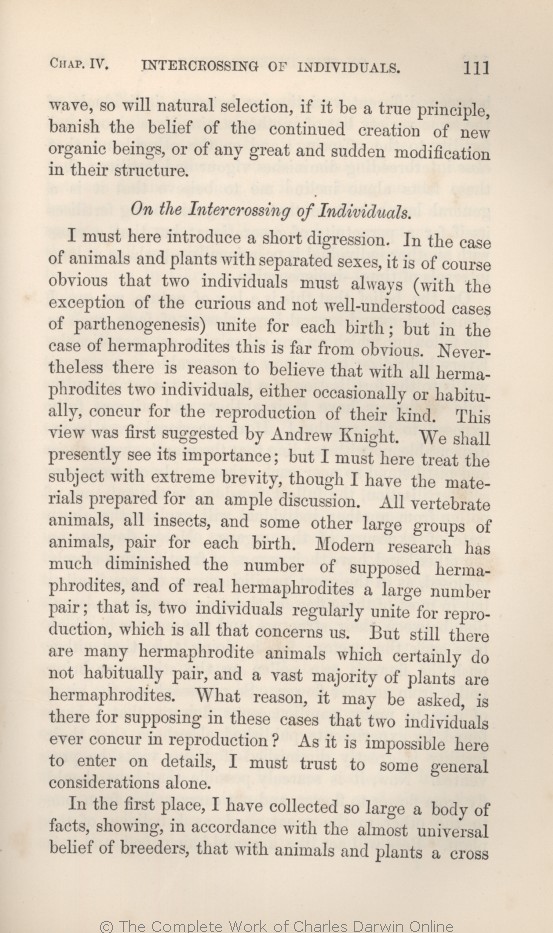single diluvial wave, so will natural
selection, | selection, 1859 1860 1866 1869 | | selec- tion, 1861 | | selection 1872 |
| if it be a true principle, 1859 1860 1861 1866 1869 |
| OMIT 1872 |
| modification 1859 1860 1861 1869 1872 | | modifications 1866 |
|
On
|
On
1866 1869 1872 | |
On
1859 1860 1861 |
|
the
1866 1869 1872 | |
the
1859 1860 1861 |
|
Intercrossing
1866 1869 1872 | |
Intercrossing
1859 1860 1861 |
|
of
1866 1869 1872 | |
of
1859 1860 1861 |
|
Individuals.
1869 | |
Individuals
.—
1859 1860 | |
Individuals.
—
1861 | |
Individuals. 1866 1872 |
|
I must here introduce a short digression. In the case of animals and plants with separated sexes, it is of course obvious that two individuals must always
(with the exception of the curious and not well-understood | (with the exception of the curious and not well-understood 1860 1861 1866 1869 1872 |
| unite for each birth; but in the 1859 |
| cases 1860 1861 1866 1869 1872 | | case 1859 |
| parthenogenesis) unite for each birth; but in the case of hermaphrodites 1860 1861 1866 1869 1872 |
| hermaphrodites 1859 |
| there is reason 1869 1872 |
| I am strongly inclined 1859 1860 1861 1866 |
| view 1860 1861 1866 1869 1872 | | view, 1859 |
| was first 1860 1861 1866 1869 |
| I may add, was first 1859 |
| was long ago doubtfully 1872 |
| Andrew 1859 1860 1861 1866 1869 | | Sprengel, 1872 |
| Knight. 1859 1860 1861 1866 1869 |
| Knight, and Kölreuter. 1872 |
|
|
In the first place, I have collected so large a body of facts,
showing, | showing, 1859 1860 1861 1866 1869 |
| and made so many experiments, showing, 1872 |
|









